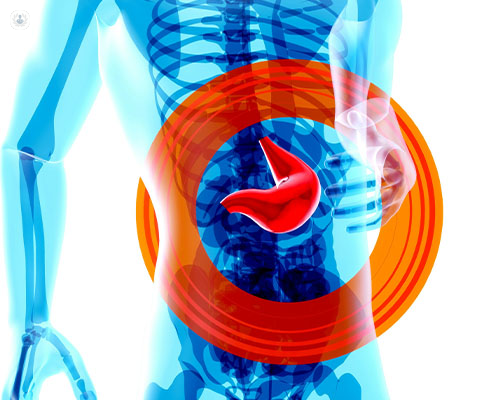What you need to know about metabolic dysfunction-associated steatotic liver disease
Written in association with:Metabolic dysfunction-associated steatotic liver disease (MASLD) is a condition where there is a buildup of fat in the liver. Although some fat in the liver is normal, MASLD is when the fat becomes more than 10% of the liver’s weight and it stops being able to function properly due to stiffness, which can have devastating consequences. We spoke to leading hepatologist Dr Richard Parker all about this disease and what can be done to treat it.

What causes MASLD?
MASLD is common for people who have metabolic syndrome, which is a combination of some or all of the following: obesity, high blood pressure, high cholesterol, diabetes or pre-diabetes; over 60% of patients who have obesity will have MASLD. Patients who contract MASLD do not drink alcohol excessively, which is why it is also known as non-alcoholic fatty liver disease (NAFLD) – and it is important to differentiate this condition from alcoholic fatty liver disease, as though they affect the liver similarly, the causes are different and thus treatment is also different.
What are the symptoms and stages of MASLD?
MASLD doesn’t have any symptoms in its first stage, which is why it often can progress to its worse and more severe stage metabolic dysfunction-associated steatohepatitis (MASH), where the liver becomes inflamed. Patients could feel tired, weak, and complain of discomfort or pain in the abdomen, specifically the top right side, and doctors thus fail to notice MASLD or MASH upon examination of a patient. Even a blood test may fail to reveal the issue. However, with imaging tests like an ultrasound or a CT scan, the state of the liver can be seen. At this stage, doctors may conduct a biopsy of the liver for specialised analysis. After MASH, the condition could progress to forming fibroids, or scarring, on the liver due to the constant inflammation.
The final, worst stage of MASLD is cirrhosis, where the liver shrinks and is extremely scarred, damaging it permanently and at extreme risk of failure. Some symptoms of this stage are fluid buildup in the legs and abdomen, red palms, confusion and irritability (hepatic encephalopathy), and dark, velvety patches along the back of the neck and the underarms called acanthosis nigricans. Cirrhosis cannot be cured, only slowed, but it can take years, decades even, to get to this stage after developing MASLD, so patients do have time to seek treatment and change their lifestyles to avoid this stage. If the liver is completely unfunctional, a liver transplant may be necessary. Other conditions that patients with MASLD are at risk for are heart disease and diabetes, if not already preexisting.
How is MASLD diagnosed and treated?
People with metabolic syndrome or at risk for it should take care to undergo liver testing at least once a year. Once a diagnosis is made, a treatment plan can be made. The best and most effective treatment for MASLD is simply leading a healthier lifestyle. Patients should be proactive in managing their blood pressure, cholesterol, nutrition and physical activity.
Patients are encouraged to try and lose weight gradually to reduce fat and inflammation in the liver, which can possibly reduce the scarring in the liver. They should not try to lose the weight in one fell swoop and dramatically, as this will disrupt the body further and weaken them. If alcohol was drunk at all, it should be ceased entirely. Engaging in regular exercise can help not only with the weight loss but also with strengthening the muscles, lungs, and heart. The diet is a major factor for preventing and treating MASLD, and patients should aim to avoid saturated fats (animal fats), and processed, oversalted, and sugary foods like fizzy drinks, crisps, white bread, and candies. Instead, patients should aim to drink more water, eat more fruits and vegetables, and incorporate more protein and carbohydrates for balanced meals. With due diligence, MASLD can be reversed.
If you believe you might be at risk for MASLD, or struggling with issues with your liver, consult with Dr Richard Parker via his Top Doctors profile.


